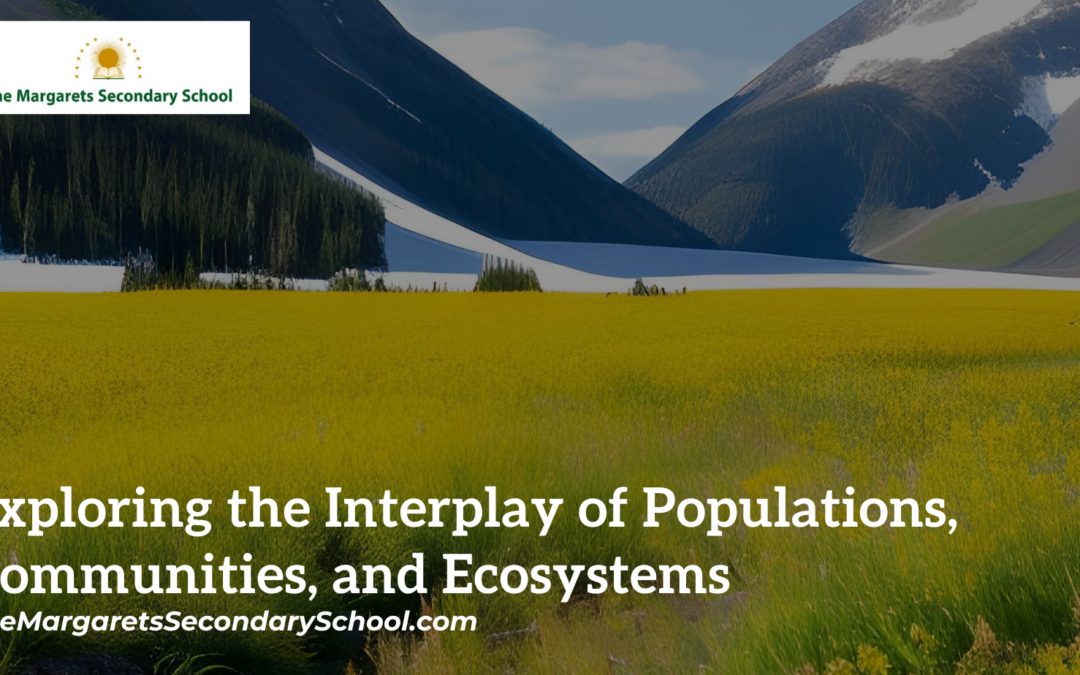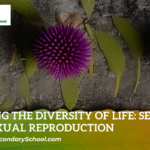Populations, communities, and ecosystems
The natural world is a tapestry woven together by intricate relationships between living organisms and their environments. This intricate web of interactions spans across various levels, from individual populations to dynamic communities, ultimately culminating in the complex functioning of ecosystems. Understanding these levels of organization is essential to grasp the delicate balance that sustains life on Earth.
Populations: The Building Blocks of Life
At the heart of ecology lies the concept of populations. A population refers to a group of individuals of the same species that inhabit a specific area and interact with one another. Populations are characterized by factors such as size, density, distribution, and age structure. The dynamics of populations are influenced by a myriad of factors including birth rates, death rates, immigration, and emigration.
Populations are not static entities; they evolve over time. The study of population ecology delves into questions about how and why populations change in size and composition. Understanding population dynamics is vital for fields like conservation biology, as it provides insights into endangered species, invasive species, and the overall health of ecosystems.
Communities: Where Relationships Flourish
While populations focus on a single species, communities encompass a more complex arrangement. A community consists of multiple populations of different species interacting within a defined area. These interactions can be direct, such as predation, competition, and mutualism, or indirect, where the actions of one species indirectly affect another.
The dynamics of communities are shaped by ecological niches, which are the roles each species plays within the community. Niche differentiation and resource partitioning allow multiple species to coexist by minimizing competition. Studying communities aids in understanding the intricate relationships between species and the ripple effects that occur when one population changes, leading to a cascade of impacts throughout the community.
Ecosystems: The Sum of Their Parts
Ecosystems represent the grand tapestry where populations and communities intersect with abiotic factors such as soil, water, climate, and topography. An ecosystem is a dynamic system characterized by energy flow and the cycling of nutrients. It’s composed of both biotic (living) and abiotic (non-living) components that interact in complex ways.
Ecosystems provide a holistic view of how life interacts with the physical environment. They can be as small as a pond or as large as a rainforest. Understanding ecosystems is crucial for managing resources sustainably, predicting responses to environmental changes, and comprehending the services ecosystems provide, such as water purification, carbon sequestration, and pollination.
The Interconnectedness: A Delicate Balance
The relationships between populations, communities, and ecosystems are interdependent and intricate. A change in one element can trigger a domino effect across the entire system. For instance, a decline in a predator population can lead to an explosion of its prey species, which in turn could have cascading effects on vegetation and other species that rely on those resources.
Human activities have a profound impact on these interconnected systems. Habitat destruction, pollution, climate change, and invasive species can disrupt the balance, leading to habitat loss, species extinctions, and altered ecosystem functions. Recognizing the delicate nature of these connections is crucial for devising strategies to mitigate negative impacts and foster a harmonious relationship between humans and the environment.
Conclusion: Pondering the Complexities of Life
Populations, communities, and ecosystems collectively form the intricate fabric of life on Earth. Each level of organization offers a unique perspective on the interplay between organisms and their surroundings. By delving into these ecological layers, scientists gain insights into the forces shaping biodiversity, the dynamics of ecosystems, and the ways in which human actions can either uphold or threaten the delicate balance that sustains our planet. As we continue to explore and study these relationships, we come to appreciate the beauty and complexity of the natural world, inspiring us to preserve and protect it for generations to come.





